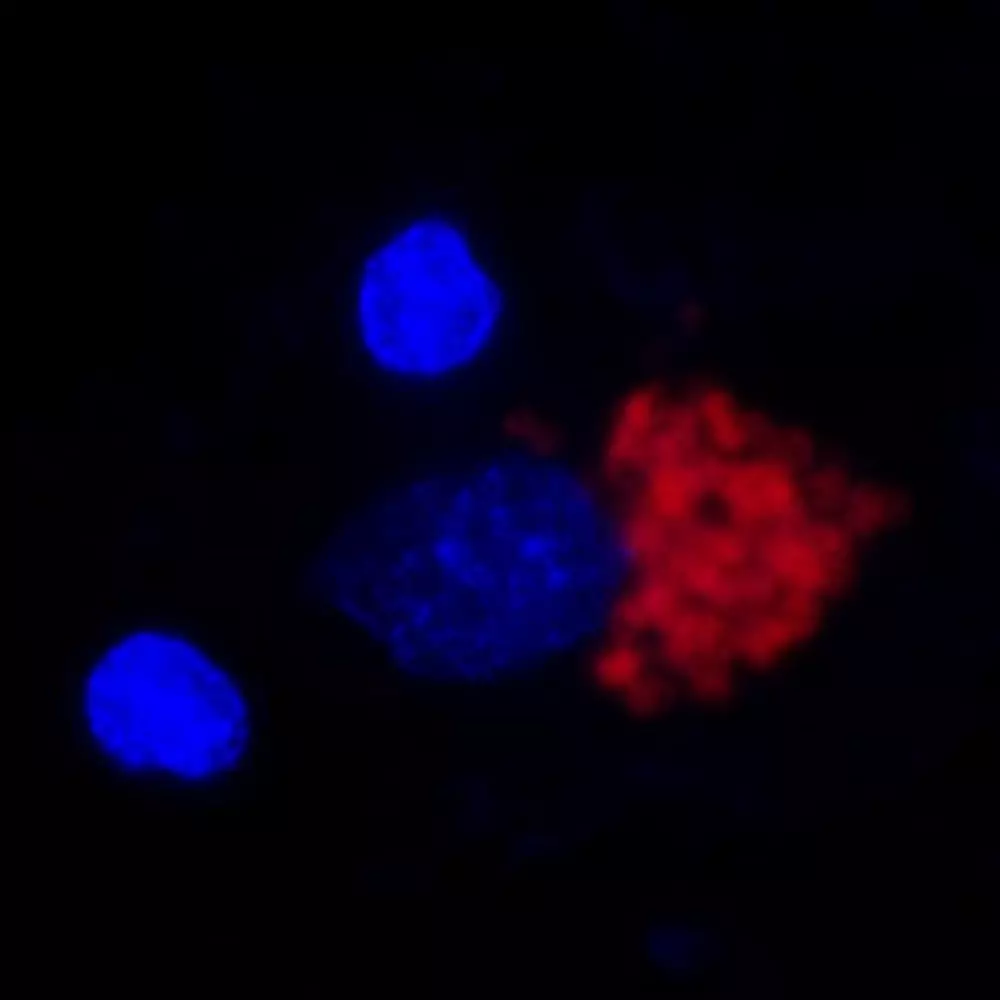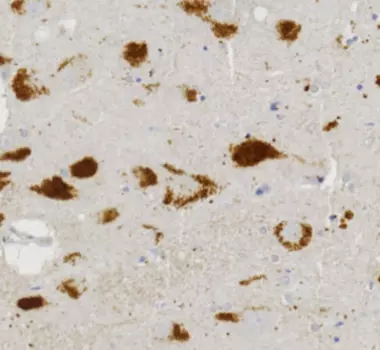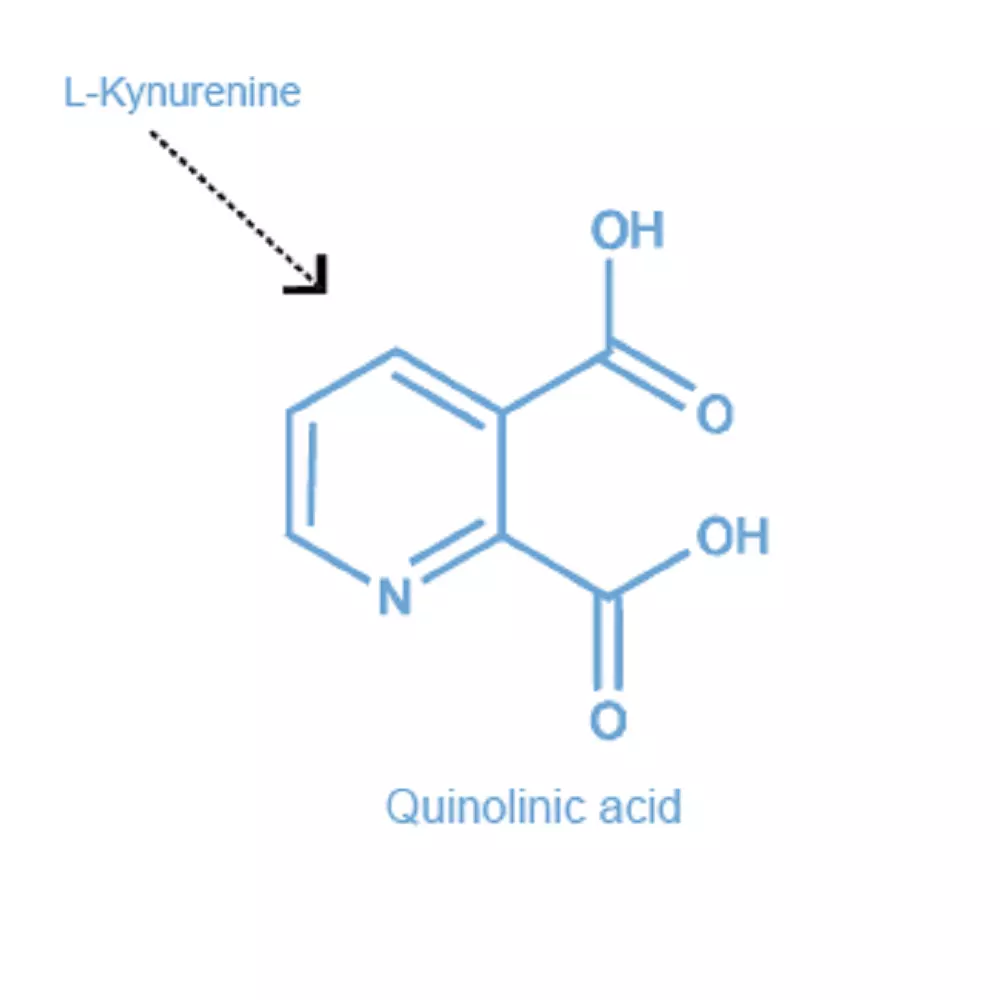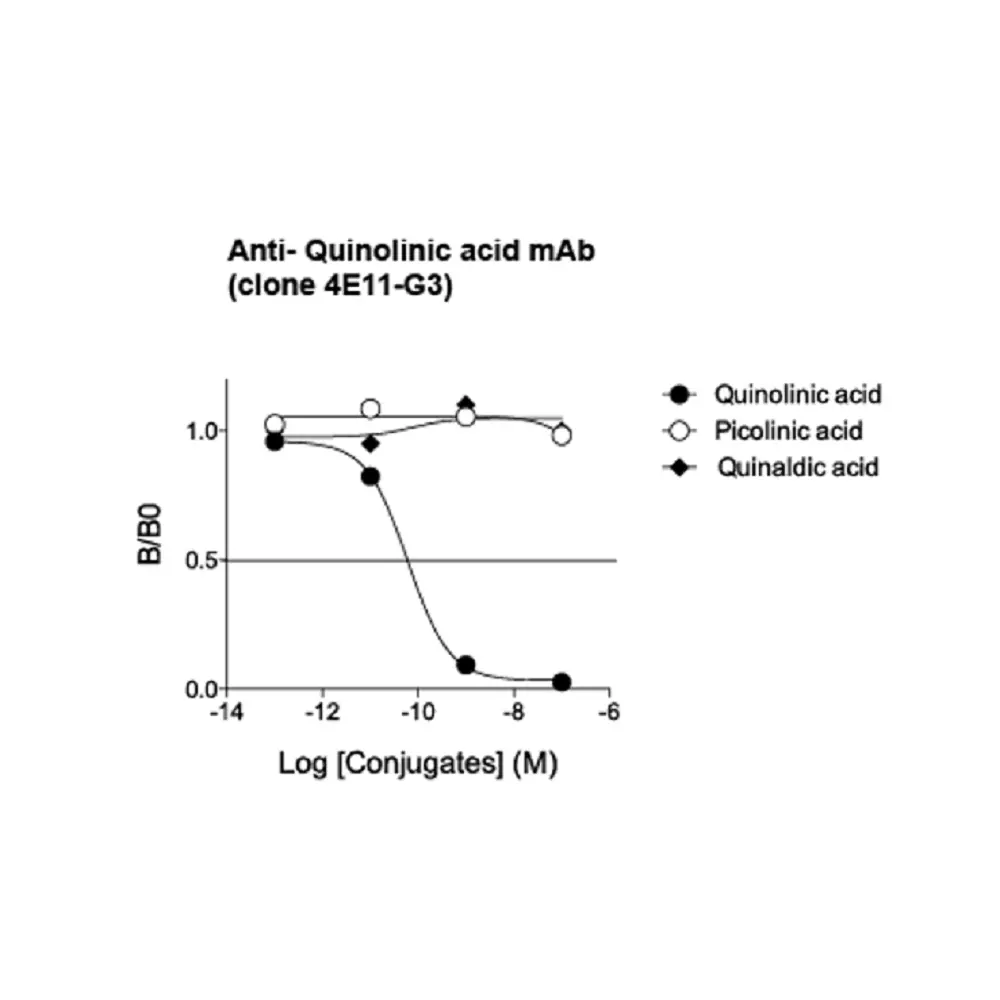Quinolinic acid Antibody – Mouse Monoclonal
Ref: IS002
Kynurenine pathwayTryptophan metabolismToxinsMonoclonal AntibodiesICCIFIHC
 +
+Quinolinic acid detection in human midbrain by immunohistofluorescence (IHF) Quinolinic acid detection in human midbrain by immunohistofluorescence (IHF) Quinolinic acid detection in human midbrain by immunohistochemistry (IHC) Anti- Quinolinic acid antibody affinity & specificity Quinolinic acid Quinolinic acid detection in human midbrain by immunohistofluorescence (IHF)
Immunofluorescence staining highlights nuclear exclusion of Quinolinic acid in human midbrain. Paraffin-embedded brain tissue section was subjected to pH=9 antigen retrieval followed by overnight incubation with primary anti-Quinolinic acid antibody (dilution 1/250). After incubation with Alexa-555 conjugated secondary Ab, epifluorescence microscopy (100X) was used to visualize the staining.
DatasheetMSDS
This mouse monoclonal antibody to Quinolinic acid was validated for IF & IHC in human brain tissues. It was recently used in 3 papers to evidence the role of Quinolinic acid in atherogenesis & glioblastoma.
| Clonality | Monoclonal antibody (clone 4E11-G3) |
| Host | Mouse |
| Valided applications | IHC / IF |
| Reactivity | Reacts with all species |
| References | Not yet cited to our knowledge Submit content and get a 10% discount! |
| Format | 50µL |
| References | Cited in 4 papers |
| Size | 50µL |
|---|
449.00€
65 in stock
Worldwide shipping
They published with this product see papers
Product overview
| Product name | Quinolinic acid antibody |
| Synonyms | Pyridine-2,3-dicarboxylic acid antibody
2,3-pyridinedicarboxylic acid antibody 3,4-Pyridinedicarboxylic acid antibody Pyridine-3,4-dicarboxylic acid antibody |
| Immunogen | Conjugated quinolinic acid |
| Isotype | IgG1 k chain |
| Clone | clone 4E11-G3 |
| Specificity | When tested in competitive ELISA, the anti-Quinolinic acid antibody did not show any significant cross reactivity with Picolinic and Quinaldic acid conjugates |
Storage
| Form | Liquid |
| Purity | Purified IgG |
| Concentration | 0,5mg/ml |
| Storage |
Store at +4°C for short term (1-2 months). Aliquot and store at -20°C for long term. Avoid repeated freeze / thaw cycles |
| Material safety datasheet | Download MSDS |
| Immunohistochemistry (IHC) | Dilute at 1:100-1:1000. Perform heat antigen retrieval (pH=9) before initiating IHC staining protocol on paraffin-embedded and frozen sections |
| Immunofluorescence (IF) | Dilute at 1:50-1:500 on paraffin-embedded and frozen sections. Perform heat antigen retrieval and incubate fluorescent dyes conjugated secondary antibody |
| Comments | Optimal working dilutions must be determined by the end-user |
| Restrictions | For research use only |
Product citations
- Edaravone protects against cuprizone-induced demyelination in rats by modulating TNF-α/NF-ĸB/NLRP3 signaling and the kynurenine pathway
Check article
Authors : Mahmoud et al., Eur J Pharmacol
2025-04 - The dangerous “West Coast Swing” by hyperglycaemia and chronic stress in the mouse hippocampus: Role of kynurenine catabolism
Check the article
Authors : Gliozzi M et al., Pharmacological Research
2024-01 - Atheroma plaque microenvironment stimulates kynurenine production by macrophages to induce endothelial adhesion molecules in the context of atherogenesis
Check the article
Authors : Dongen et al., bioRxiv
2023-07 - Quinolinate promotes macrophage-induced immune tolerance in glioblastoma through the NMDAR/PPARγ signaling axis
Check the article
Authors : Kesarwani et al., Nature Communications
2023-03 - Nociceptor-derived Reg3g prevents endotoxic death by targeting kynurenine pathway in microglia
Check the article
Authors : Sugisawa et al., Cell reports
2022-03






